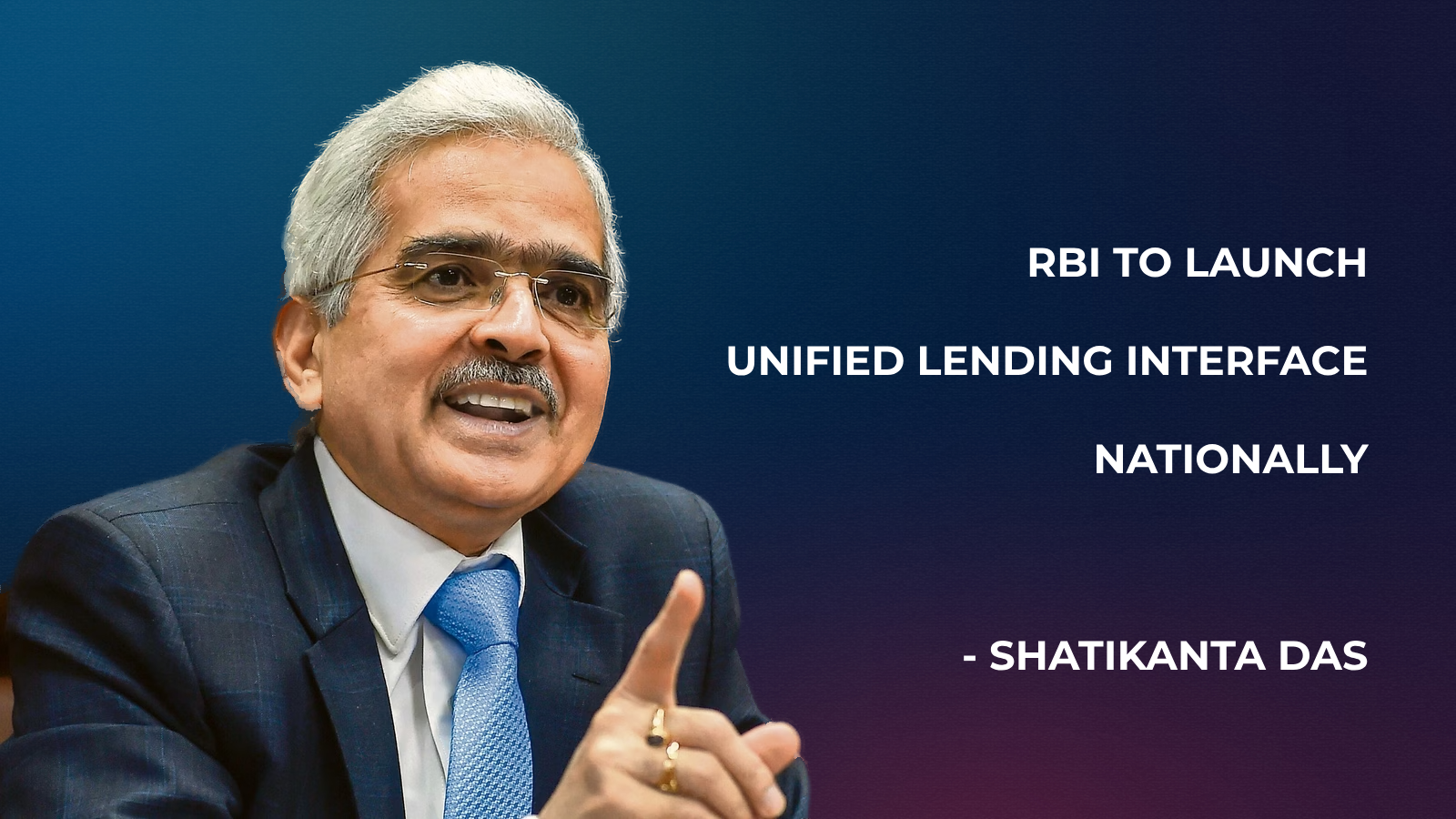Introduction: The Dawn of a New Lending Era
India’s financial landscape is on the brink of a significant transformation. The Reserve Bank of India (RBI) has unveiled its latest innovation: the Unified Lending Interface (ULI). This groundbreaking platform promises to revolutionize credit access, particularly for rural and small borrowers who have long faced challenges in securing financial assistance.
Understanding the Unified Lending Interface
What is ULI?
The Unified Lending Interface, or ULI, is a new digital platform designed to streamline the lending process in India. Building on the success of the Unified Payments Interface (UPI), which transformed retail payments, ULI aims to do the same for the lending sector.
The Vision Behind ULI
RBI Governor Shaktikanta Das, in announcing the launch of ULI, emphasized its potential to expedite the lending process. The platform is expected to address the significant delays and challenges faced by borrowers, especially in sectors like agriculture and micro, small, and medium enterprises (MSMEs), where credit demand is high but largely unmet.
The Mechanics of ULI: How It Works
Digital Information Flow
ULI facilitates the seamless flow of digital information, such as land records from various states, directly to lenders. This streamlined process significantly reduces the time required for credit appraisals, particularly benefiting smaller and rural borrowers.
API-Driven Architecture
The platform’s architecture is built on standardized APIs (Application Programming Interfaces), designed for a ‘plug and play’ approach. This ensures digital access to information from diverse sources, enabling borrowers to receive seamless credit delivery with reduced turnaround times and minimal documentation.
ULI in the Context of India’s Digital Infrastructure
The ‘New Trinity’: JAM, UPI, and ULI
ULI is part of what the government calls the ‘new trinity’ - JAM (Jan Dhan, Aadhaar, and Mobile), UPI, and now ULI. This trinity represents a significant leap forward in India’s digital infrastructure journey, facilitating direct cash transfers and promoting financial inclusion.
Global Interest and Potential
The success of UPI has already garnered global interest. If implemented as planned, ULI has the potential to further showcase India’s digital innovation on the world stage, offering a model for other countries to emulate.
The Potential Impact of ULI
Revolutionizing Financial Inclusion
ULI has the potential to bridge the gap in formal credit delivery, potentially freeing countless individuals from exploitative moneylenders. This direct online approach offers a more sensible solution compared to complex financial instruments that contributed to crises like the US subprime loan crisis.
Accelerating Credit Access
By reducing bureaucratic hurdles and streamlining the lending process, ULI could significantly accelerate credit access for underserved populations. This could lead to a boom in entrepreneurship and economic activity in rural and semi-urban areas.
Challenges and Considerations
Loan Recovery Risks
While ULI promises to increase lending volumes, it also presents new challenges for lenders, particularly in terms of loan recovery risks. During economic downturns, small borrowers are especially vulnerable to cash flow disruptions.
The Need for Robust Risk Assessment
Unlike UPI, which primarily facilitates payments, ULI directly facilitates credit, making lenders responsible for associated recovery risks. Lenders must implement effective strategies to mitigate potential recovery challenges while maintaining the efficiency promised by ULI.
ULI vs. Traditional Lending: A Comparative Analysis
Speed and Efficiency
Traditional lending often involves lengthy processes and substantial paperwork. ULI promises to drastically reduce these bottlenecks, offering a more efficient alternative.
Accessibility
While traditional lending often favors urban, salaried individuals, ULI has the potential to democratize credit access, reaching previously underserved rural and informal sector borrowers.
The Global Context: ULI’s Potential Beyond India
A Model for Developing Economies
ULI’s approach to addressing information asymmetry at the grassroots level could serve as a model for other developing economies facing similar challenges in credit delivery.
Potential for International Adoption
Just as UPI has garnered international interest, ULI could potentially be adapted and implemented in other countries, further cementing India’s position as a leader in financial technology innovation.
Future Prospects and Developments
Nationwide Rollout Plans
While currently in the pilot stage, the RBI is planning a nationwide rollout of ULI. The timeline and specific details of this rollout will be crucial in determining the platform’s success and impact.
Potential for Further Innovation
As ULI is implemented and refined, there’s potential for further innovations in the lending space, possibly leading to new financial products and services tailored to the needs of previously underserved populations.
Conclusion: A New Chapter in India’s Financial Story
The launch of the Unified Lending Interface marks a significant milestone in India’s journey towards comprehensive financial inclusion. By leveraging technology to address longstanding challenges in credit access, ULI has the potential to unleash a lending revolution that could transform the economic landscape of the country.
As we look to the future, the success of ULI will depend on careful implementation, robust risk management, and continued innovation. If these challenges are met, ULI could indeed become as transformative for lending as UPI has been for payments, writing a new chapter in India’s financial story and potentially offering a model for the world to follow.
